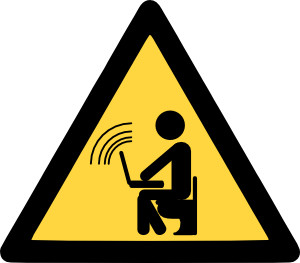 Amateur radio operators are weighing in on the hotel industry’s petition to the Federal Communications Commission asking for authority to “manage” Wi-Fi hot spots used by hotel patrons. In October the FCC hit Marriott with a $600k fine for blocking personal Wi-Fi networks at its Gaylord Opryland Hotel and Convention Center in Nashville, Tennessee. Meanwhile the hotelier was charging up to $1,000 for a device to access its own Wi-Fi system.
Amateur radio operators are weighing in on the hotel industry’s petition to the Federal Communications Commission asking for authority to “manage” Wi-Fi hot spots used by hotel patrons. In October the FCC hit Marriott with a $600k fine for blocking personal Wi-Fi networks at its Gaylord Opryland Hotel and Convention Center in Nashville, Tennessee. Meanwhile the hotelier was charging up to $1,000 for a device to access its own Wi-Fi system.
But Marriott and the hotel industry are now asking the FCC for permission to continue this practice, arguing that indie Wi-Fi spots can be used to interfere or hack a hotel’s network. Thus these hot spot bases should be classified as low emissions “Part 15” devices, exempt from the Commission’s anti-blocking rules. The agency is running a proceeding on the request, to which various advocates for Ham operators have responded. Here is one comment:
“Please reject this request to jam customers’ Wi-Fi and Mi-Fi, because it would allow the petitioner to block the public access to legal, essential, secure, and reliable Internet services in order to charge for slower, less reliable, less secure service, thus giving the petitioner a monopoly on providing the lower-quality service.
2.4Ghz and 5Ghz frequencies used for WIFI, fall in the 13cm and 5cm Amateur Radio Service Bands. This request would allow malicious interference by the petitioners and as such violates FCC rules and should not be allowed.”
Here’s a more detailed protest from a licensed operator:
“My primary concern is that the petitioner’s desired policy would provide for technology that cannot distinguish between part 15 emissions and part 97 emissions when the part 97 operator uses 802.11 standards for emissions. While the commission clearly desired sharing of some frequencies between part 15 and part 97, I don’t believe they intended for either service to completely block certain emission types within a geographic area (and certainly not to provide higher levels of service to one at the expense of the other).”
Quick translation of the above: “Part 97” is the section of the FCC’s rules that govern the Amateur Radio Service, whose practitioners (one-to-one radio communicators often known as “Hams”) provide public safety networks during emergencies. 802.11 refers to the standards for Wi-Fi band gadgets, typically Local Area Network routers.
You can follow the whole proceeding here. Thanks to Bennett Z. Kobb for tweeting me about this.
@MatthewLasar For your new FCC Watch: Definitely check out the action happening around RM-11737 !
— Bennett Z. Kobb (@buzzkobb) January 8, 2015


